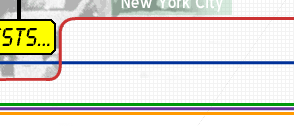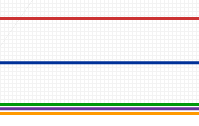



General Motors and You || The Secret History of General Motors || "Does the City Exist for People or for Motorcars?" || A Spiral Unto Death
Generating Traffic: A Legacy of Congestion
Traffic Spirals
Moses' work in New York City and his focus on the automobile is an example of ineffective planning for future city growth and development. Moses' work is actually not an example of a lack of urban planning but rather a very conscious plan to set the status of the car as the most important means of transportation for metropolitan New York. Moses planned so as to affect the city for years into the future and hinder the construction of mass transit facilities or alternatives. Moses' plans lacked the balance that would be created by offering a variety of means of transportation. This lack of transportation alternatives, and emphasis on the car resulted in a malfunctioning system of highways and bridges.
Moses' first large public works were located on Long Island. His roads there show early evidence of the ineffectiveness of Moses' urban and metropolitan transportation plans. Moses first learned in Long Island that parkways fell under the jurisdiction of the Parks Commissioner and that the definition of parkways was flexible. He used that flexibility and built numerous parkways throughout all of Long Island. Many residents of Long Island drove into New York City daily to work and Moses wanted to alleviate traffic problems for these driving commuters. With each new highway that Moses built, however, traffic increased. Moses' attempt to alleviate congestion only generated more traffic. Planners outside of Moses' circle knew about this reality of "'traffic generation'" in which "the more highways [that] were built to alleviate congestion, the more automobiles [that] would pour onto them and congest them and thus force the building of more highways -- which would generate more traffic and become congested in their turn in an inexorably widening spiral..." (p.897). But Moses was not one to learn from his mistakes.
As traffic began piling up on the roads and bridges Moses built in New York City, Moses continued building instead of investigating alternative means of decreasing traffic. In order to alleviate traffic problems on the Queensboro Bridge he constructed the Triborough Bridge. The Triborough, in addition to serving drivers from Queens and Manhattan, provided drivers from the Bronx and the northern suburbs with another means to travel by car within the city. When the Triborough filled with congestion shortly after opening, Moses constructed the Bronx-Whitestone Bridge, from the Bronx directly to Queens. The Whitestone Bridge was planned only a mile to the east of the Triborough Bridge. Soon after the completion of the Whitestone all three bridges were congested by heavy traffic.
Worse than his extreme focus on ineffective solutions to traffic congestion was Moses' stubborn determination to prevent future mass transportation facilities on any of his roads or bridges. While planning the Whitestone Bridge the Regional Plan Association proposed providing space on the bridge for future mass transit system construction. The construction of these mass transit facilities, which would necessitate even more funding for the bridge, did not have to be "immediate," but the provision for it -- either by providing space or even just making the bridge's foundations strong enough to support future construction of a second deck for mass transit facilities -- did need to be built into the bridge's initial plan (see Caro p.519). In addition, Moses also destroyed existing mass transit structures to attract more drivers to his roads and bridges. He tore down a ferry that crossed the East River between Queens and Manhattan in order to make room for an approach to a highway that he was planning along the river. This new group of drivers that originally used the ferry would then have to drive over one of his bridges and pay tolls. With the majority of city money going to Moses' projects rather than mass transit facilities and with Moses himself not improving the mass transportation system already existing in New York City, city residents who did not own cars were forced to continue using an increasingly inadequate transit system or, for those who could afford to, purchase automobiles and add to the problematic congestion of the city.
The Need for Balance
Looking at the weaknesses of Moses' highway and bridge constructions, one can see the need for a "balanced transportation system" (p.897). Moses' continuous road construction only added to traffic congestion in New York City and his focus on the car excluded other means of transportation. Furthermore, by failing to improve or add upon existing mass transit facilities, Moses made travel throughout the boroughs more difficult for those residents who could not afford cars, thereby discriminating against lower-income city residents in his projects. He neglected the needs of thousands of city residents.
Moses' reign over public works in New York...occurred at the most crucial point in time in the city's history, the decades during which its vast open spaces were filling up and being shaped on a significant scale-it was not the shouts of the people but the whispers of banks, labor unions, insurance companies, big construction combines, big business and, of course, the Retainer Regiment that determined what public works would be built in New York. He centralized in his person and in his projects all those forces in the city that in theory have little to do with the decision-making process in the city's government but in reality have everything to do with it, and by such centralization he made them strong (p.753).Furthermore, in his narrow-mindedness of viewing the car as a source of pleasure and not as a tool, he also neglected to create a system of transportation that would serve the city as it developed further into the future. For example, Moses' work in Long Island occurred while Long Island was still in its early phases of development. His lack of mass transit facilities and provision for them resulted in a low-density growth pattern which caused past and future residents to be dependent on the car. Throughout New York City, he destroyed people's lives with his construction, he ruined the hearts of several neighborhoods, and he created a dependency on cars that would last for decades. His methods were destructive but overlooked because of the city's love affair with the car, and his actions were ineffective in creating an efficient, balanced system of transportation that would serve all city residents into the future.
Sixty years after its construction, the Gowanus Expressway running over Sunset Park is one of the worst sites of traffic in the Unites States. As a result of the wear and tear on the road, the city has the chance to completely transform the roadway. Moses' work has already affected the city for years and will continue to do so. The city now has a chance to listen to the needs of its residents in creating a plan in which their lives will be affected. But will another roadway with the same amount of congestion as before just be constructed? Instead of just focusing on our roads, we must remind our city planners to provide space and money for different alternatives to moving around the city than just highways and expressways and not repeat Moses' mistakes.
For more information on the current status of the Gowanus Expressway, follow the link http://www.nycroads.com/roads/gowanus/
Back to top